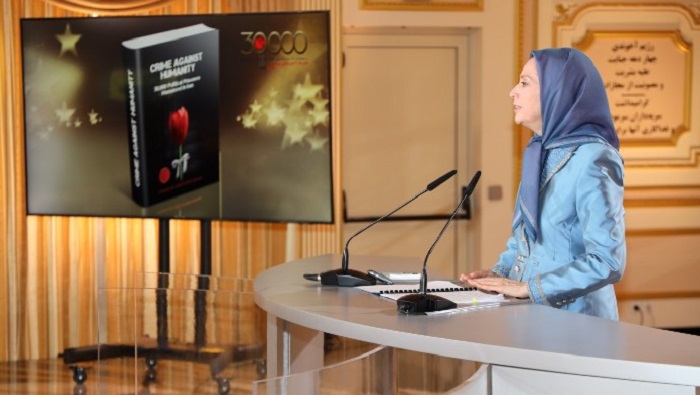
Iran solemnly commemorates the 35th year of the 1988 massacre, a blood-curdling episode where the mullahs’ regime executed over 30,000 political prisoners within mere months.
A significant majority of these victims were either members or supporters of the People’s Mojahedin of Iran (PMOI/MEK). Astonishingly, numerous victims had completed their prison terms but were incarcerated further due to their unwavering allegiance to the PMOI. Others faced this grim fate merely for tasks as innocuous as distributing the Mojahed newspaper.
This massacre indubitably stands as a pivotal chapter in Iran’s history, manifesting the sheer ruthlessness of the mullahs’ regime. This massive purging was a result of a fatwa by the regime’s founder, Ruhollah Khomeini.
Within the span of just five minutes, prisoners were given mock trials, and were subsequently executed for their unwavering support for the PMOI.

Eyewitnesses paint a heart-wrenching picture, recalling prison guards brutally assaulting prisoners during their final moments.
An equally harrowing aftermath followed. Victims were secretly interred in mass graves, their families left in the dark about their loved one’s fate or burial sites. In an egregious attempt to erase this heinous act, the regime later constructed roads and buildings atop these burial grounds.
Speaking at a Paris conference, Mrs. Maryam Rajavi, the president-elect of the National Council of Resistance of Iran (NCRI), articulated how Khomeini viewed the PMOI as a colossal threat to his regime’s existence, driven largely by PMOI’s rejection of Khomeini’s warped interpretation of Islam. This fear remains prevalent today, as more Iranian youth rally behind the PMOI.

Yet, the massacre also highlights the influential role the PMOI has played as a formidable opponent to the mullahs’ regime.
However, the regime’s attempts to suppress the PMOI didn’t end with the 1988 massacre. Persistent efforts to obliterate the movement have continued with relentless fervor.
The world also bears witness to the international community’s inability to hold the Iranian regime accountable. This dereliction has emboldened the regime to perpetrate further injustices. Yet, the Iranian populace remains resolute in their demand for justice, particularly for key figures like current president Ebrahim Raisi and supreme leader Ali Khamenei.

Described by Mrs. Rajavi as the “worst massacre of political prisoners since the end of the Second World War”, the 1988 massacre serves as a poignant reminder.
As the Iranian Resistance intensifies its global campaign for justice, Mrs. Rajavi iterates the pressing need to halt the mullahs’ regime’s longstanding impunity. Today, this tragedy stands as an emblem of an indomitable spirit for freedom and democracy that remains deeply embedded in Iranian society.

MEK Iran (follow us on Twitter and Facebook), Maryam Rajavi’s on her site, Twitter & Facebook, NCRI (Twitter & Facebook), and People’s Mojahedin Organization of Iran – MEK IRAN – YouTu
